

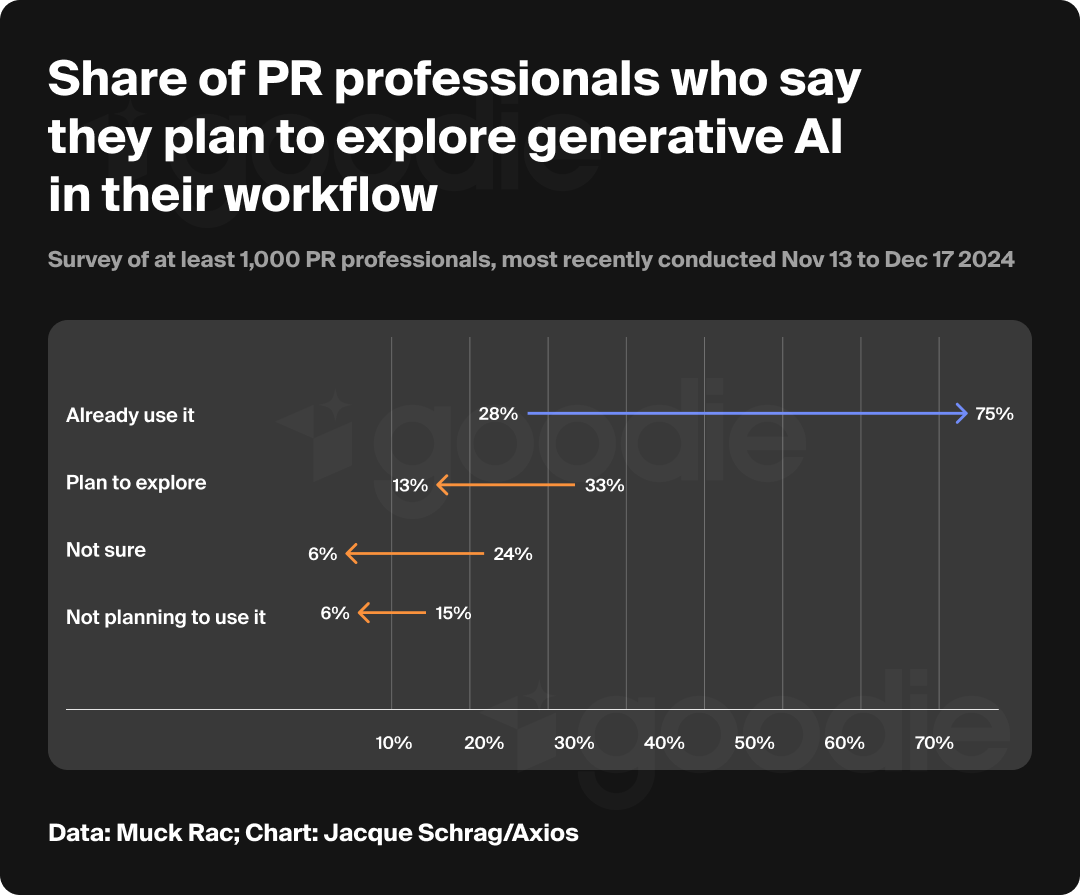
What began as experimental dabbling with artificial intelligence tools has evolved into a reshaping of how successful PR campaigns operate. The results speak louder than any prediction ever could.
Consider the hard data:
The agencies and in-house teams embracing these tools are dominating their competition in ways that would have seemed impossible two years ago. According to Global Alliance PR, AI and technology have become "the backbone of PR campaigns," changing how professionals approach everything from content creation to crisis management.
Walk into the offices of today's most successful PR agencies and you'll witness a revolution in action. But forget the flashy headlines about robots replacing humans. The real story is far more nuanced; and more practical.
Global Alliance PR's research shows that AI enables professionals to focus on strategic content creation while the technology handles platform optimization and audience targeting. This isn't about replacing human judgment; it's about amplifying it.
The smartest teams are using AI to personalize communication through sophisticated analysis of consumer behaviors and preferences. They're transforming crisis management from reactive scrambling to proactive monitoring. AI systems watch digital channels around the clock and provide sentiment analysis that enables strategic responses.
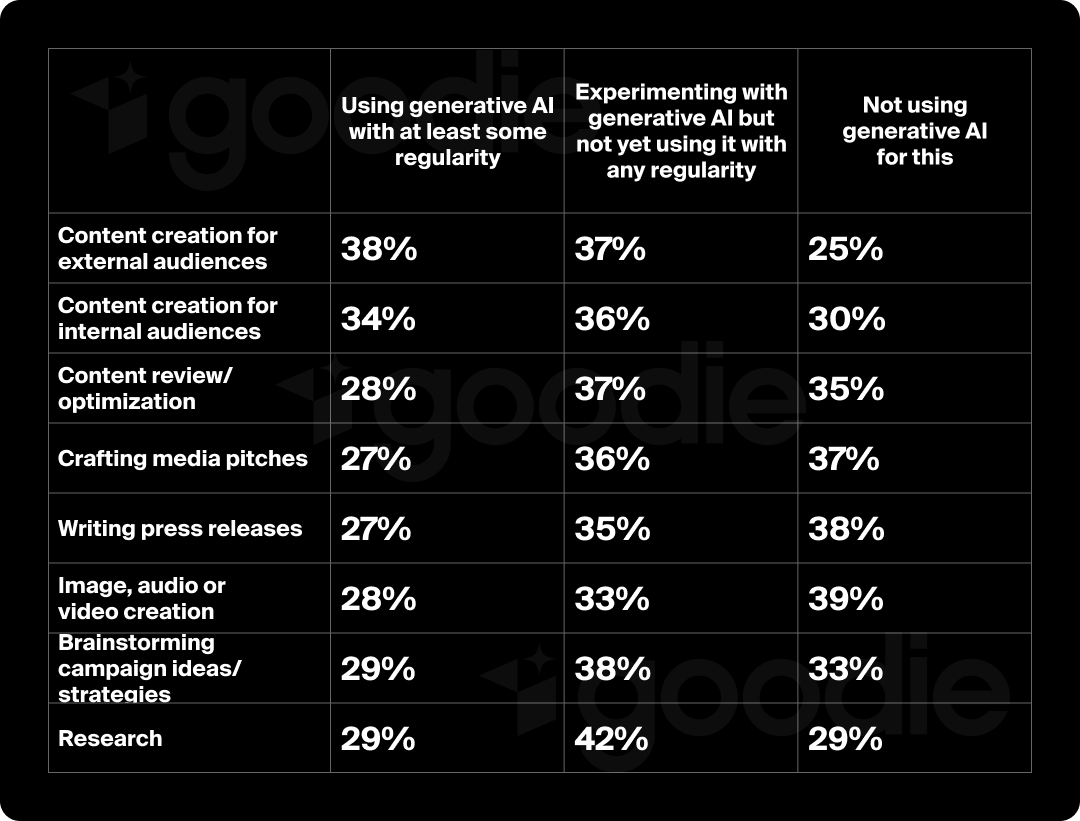
Campaign measurement has evolved from educated guesswork to a precise science. Advanced analytics tools now provide crystal-clear impact data, allowing teams to demonstrate quantifiable ROI in ways that were impossible.
But here's where it gets interesting. Meltwater's comprehensive analysis reveals the specific applications driving real results:
Chatbots handle media inquiries while maintaining perfect brand voice consistency. They're not replacing human relationships, they're freeing PR professionals to build deeper, more strategic connections.
Automated systems post at optimal engagement times and craft content that resonates with target audiences. The data on engagement improvements is staggering.
Generative AI assists with everything from press release drafts to blog posts and headlines, all tailored for specific audiences. The time savings alone have transformed how teams approach content calendars.
Real-time sentiment analysis and AI media monitoring have moved far beyond simple keyword alerts. These systems track brand mentions across every digital channel while analyzing nuanced sentiment changes that human monitoring would miss.
AI tools identify relevant journalists and publications with surgical precision, boosting media coverage rates by identifying the exact reporters most to cover specific story angles.
The transformation in how PR professionals approach storytelling represents perhaps the most profound shift in the industry's history. New Mexico State University's research demonstrates that AI enables data-driven storytelling using massive datasets to tailor messages for unprecedented impact.
This capability has unlocked personalization at a scale reserved for the largest agencies with unlimited budgets. Now, teams of any size can craft campaigns that speak to different demographic groups while maintaining brand authenticity and message consistency.
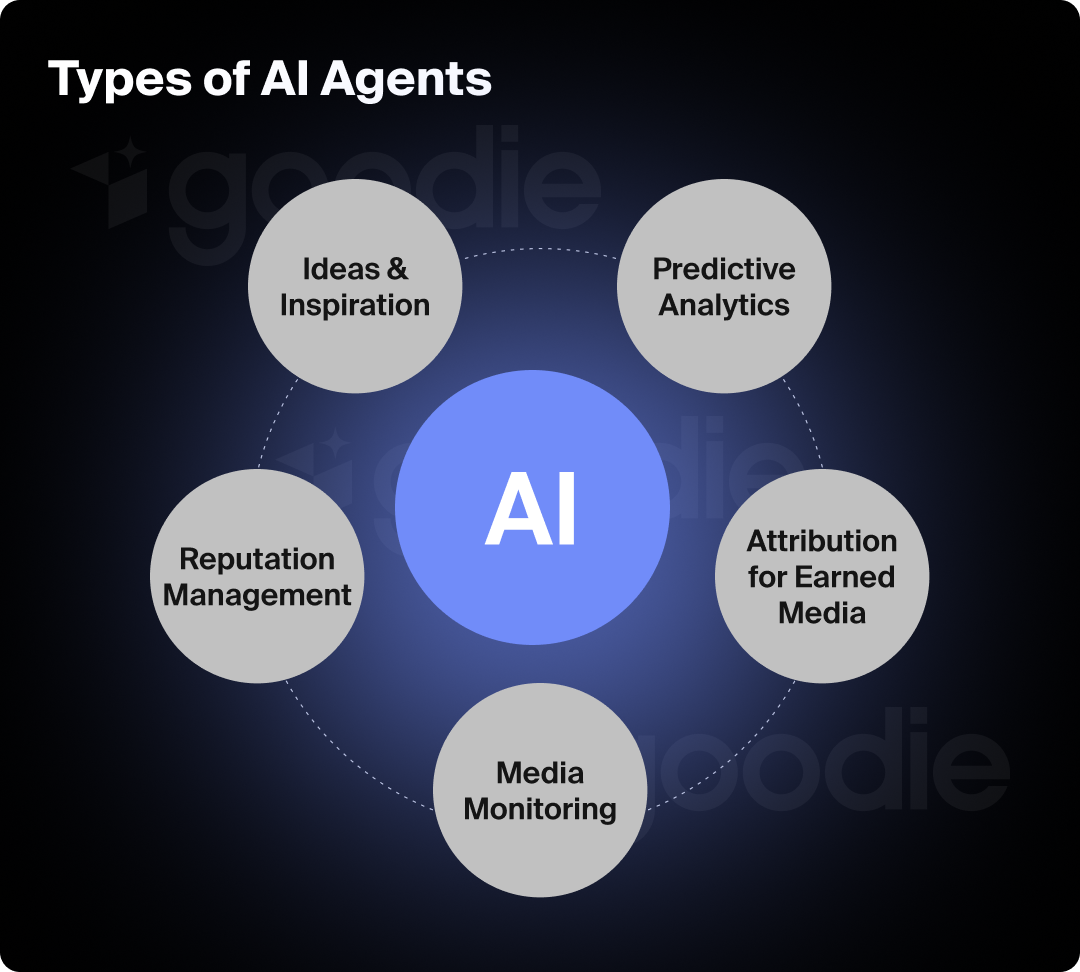
The predictive analytics capabilities have transformed PR planning from reactive firefighting to strategic foresight. Teams now:
This proactive approach has become essential for reputation management and crisis prevention.
Real-time feedback through sentiment analysis provides continuous strategic intelligence. PR teams can:
This agility often determines whether you control the conversation or spend weeks trying to catch up.
The competitive intelligence capabilities have reached sophisticated levels. Automated competitor and industry monitoring provides strategic insights that would require entire research teams to gather manually.
The PR teams achieving the most dramatic results are implementing AI across every aspect of their operations. New Mexico State University found that while automation handles press releases, media coverage analysis, and social media management, the strategic applications deliver greater returns.
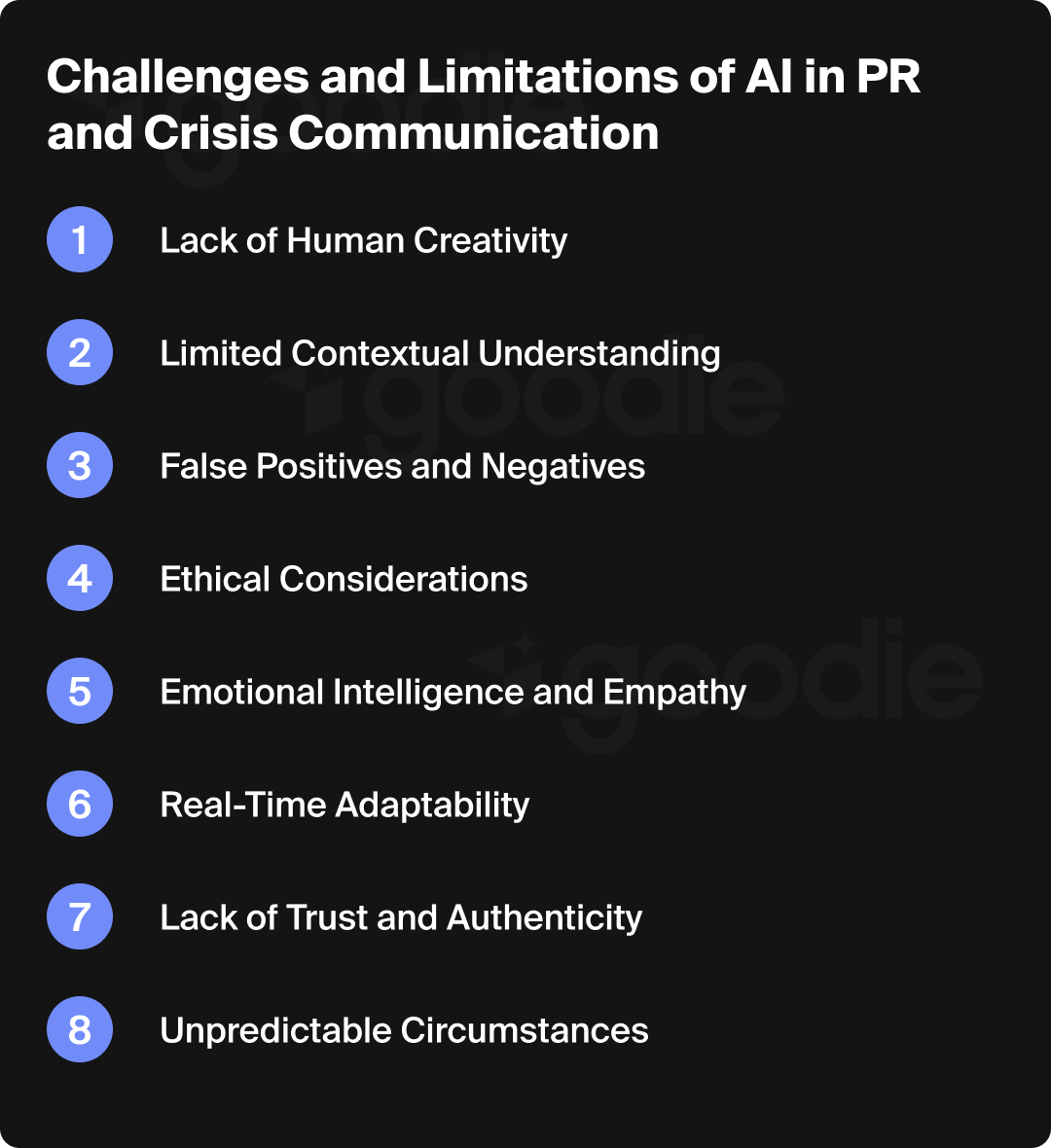
Real-time alerts have evolved beyond simple keyword monitoring. AI systems now flag emerging issues and predict potential problems before they escalate, enabling proactive responses that often prevent crises.
AI analyzes audience engagement patterns, identifies optimal messaging angles, and helps refine strategic positioning. The creative strategy remains human, but the intelligence informing those decisions has become sophisticated.
Continuous monitoring of competitor activities, industry trends, and market shifts provides strategic advantages that compound over time. Teams using these systems consistently stay ahead of industry developments while their competitors react to changes weeks later.
Every industry conversation includes this concern, and the research provides definitive answers. Meltwater's comprehensive industry data shows that 91% of PR professionals believe human creativity remains critical for effective campaigns.
The reality unfolding across the industry contradicts replacement fears entirely. AI handles technical tasks, data analysis, basic reporting, and content formatting. Humans focus on strategy development, relationship building, creative problem solving, and ethical decision-making.
New Mexico State University's findings support this collaborative model. Human skills are becoming more valuable as AI handles routine work. Emotional intelligence, ethical judgment, creative strategy, and relationship building cannot be automated and are recognized as the core differentiators for successful PR professionals.
The agencies embracing AI tools most are expanding, not contracting. They're handling larger campaigns, serving more clients, and tackling complex challenges:
One of the most valuable applications involves content review and quality assurance. AI systems now analyze press releases, marketing materials, and communications content for clarity, compelling language, audience alignment, and brand guideline compliance with remarkable accuracy.
Cision's research demonstrates that sentiment analysis and predictive scoring have become standard components of professional PR toolkits.
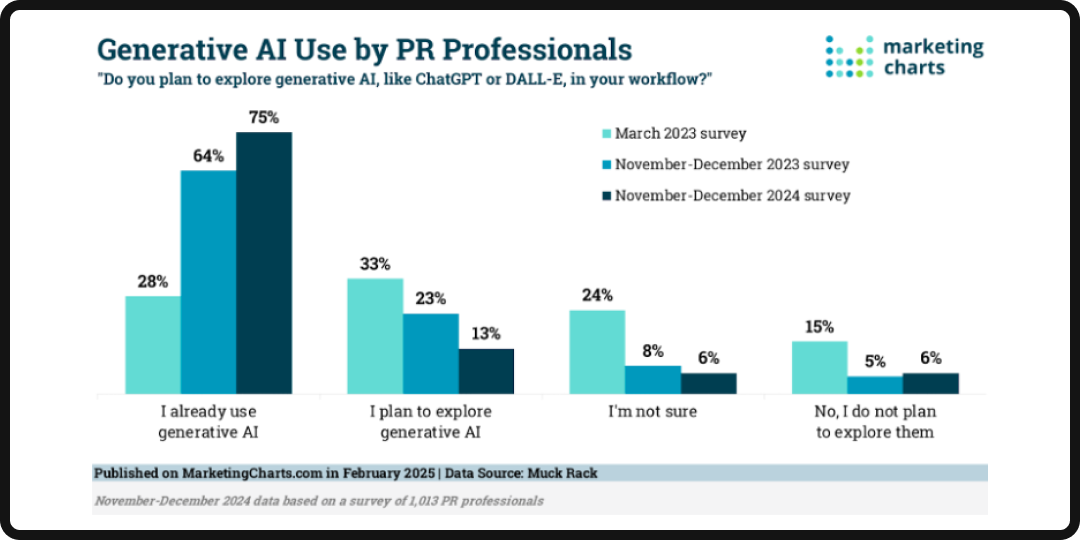
These systems provide objective content effectiveness assessment before publication, analyzing language patterns, emotional resonance, and predicted audience response.
The review capabilities extend far beyond grammar and style checking. AI evaluates:
This comprehensive review process improves content quality while reducing human review and revision time.
Advanced compliance monitoring identifies potential legal, ethical, or regulatory concerns in proposed communications. This proactive problem identification has proven invaluable for maintaining brand reputation and avoiding mistakes that could derail entire campaigns.
Rather than threatening PR careers, AI is elevating the profession's strategic importance within organizations while creating new opportunities. PR Lab's analysis shows the field evolving alongside technology, with professionals developing complementary skills that enhance rather than compete with AI capabilities.
The irreplaceable human elements are becoming more valuable as AI handles routine tasks. Organizations discover that combining AI efficiency with human strategic insight produces results neither approach could achieve independently.
New specializations are emerging rapidly:
These roles expand career opportunities while providing clear professional development pathways.
PR Lab's industry research reveals that over 60% of leading agencies now offer AI campaign services. These agencies report increased productivity, expanded service capabilities, and improved client outcomes rather than workforce reductions.
Achieving dominance in answer engines requires understanding that success depends on providing comprehensive, authoritative responses to audience questions.
Strategic content development becomes the foundation for optimization success. AI tools analyze search patterns, question formats, and answer preferences to guide content creation that addresses audience needs. This targeted approach ensures PR content achieves prominent placement in search results and voice assistant responses.
Real-time monitoring combined with rapid response capabilities maintains competitive advantage. AI alert systems identify emerging questions, trending topics, and competitor activities, enabling immediate strategic responses that capture audience attention while establishing thought leadership.
Predictive analytics allow PR teams to anticipate question trends and prepare authoritative content before competitors recognize emerging opportunities. This proactive approach has proven essential for maintaining visibility in competitive digital environments.
The integration of AI monitoring with content creation establishes continuous improvement feedback loops. Teams identify which content formats resonate most effectively, which questions generate the most engagement, and which approaches deliver optimal performance, then optimize strategies accordingly.
AI has transformed PR measurement from industry-wide frustration to competitive advantage. Cision's research demonstrates that AI campaigns can be mapped to quantifiable KPIs including:
Advanced attribution modeling tracks complete customer journeys from initial PR exposure through final conversion. This comprehensive tracking enables precise ROI calculation while demonstrating PR's direct contribution to business outcomes with unprecedented accuracy.
Real-time performance monitoring enables continuous campaign optimization. AI systems identify successful content elements, optimal timing patterns, and effective distribution channels, allowing rapid strategy adjustments that maximize campaign effectiveness throughout execution.
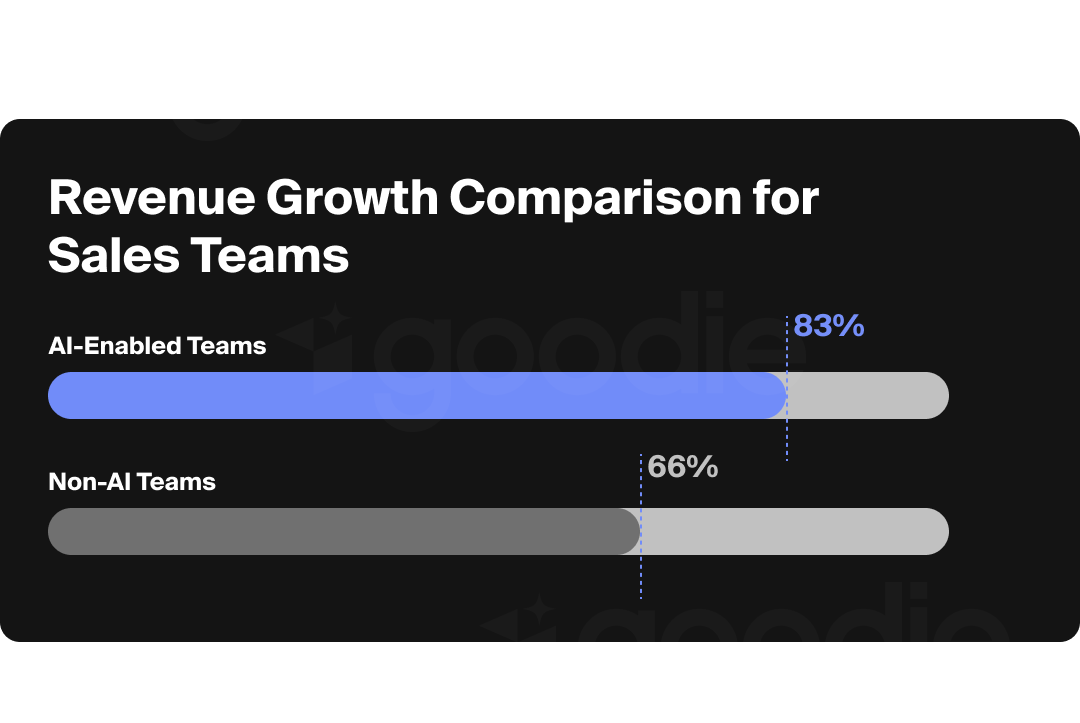
Predictive analytics capabilities provide forward-looking strategic intelligence for planning and resource allocation. Teams can:
Platforms represent different aspects of successful AI implementation. Advanced media monitoring tools analyze coverage at unprecedented scale while identifying ideal journalists and tracking campaign performance with surgical precision.
Goodie AI, for example, allows you to:
Uncover content gaps and high-impact opportunities for PR outreach with its Topic Explorer and AEO Content Writer components
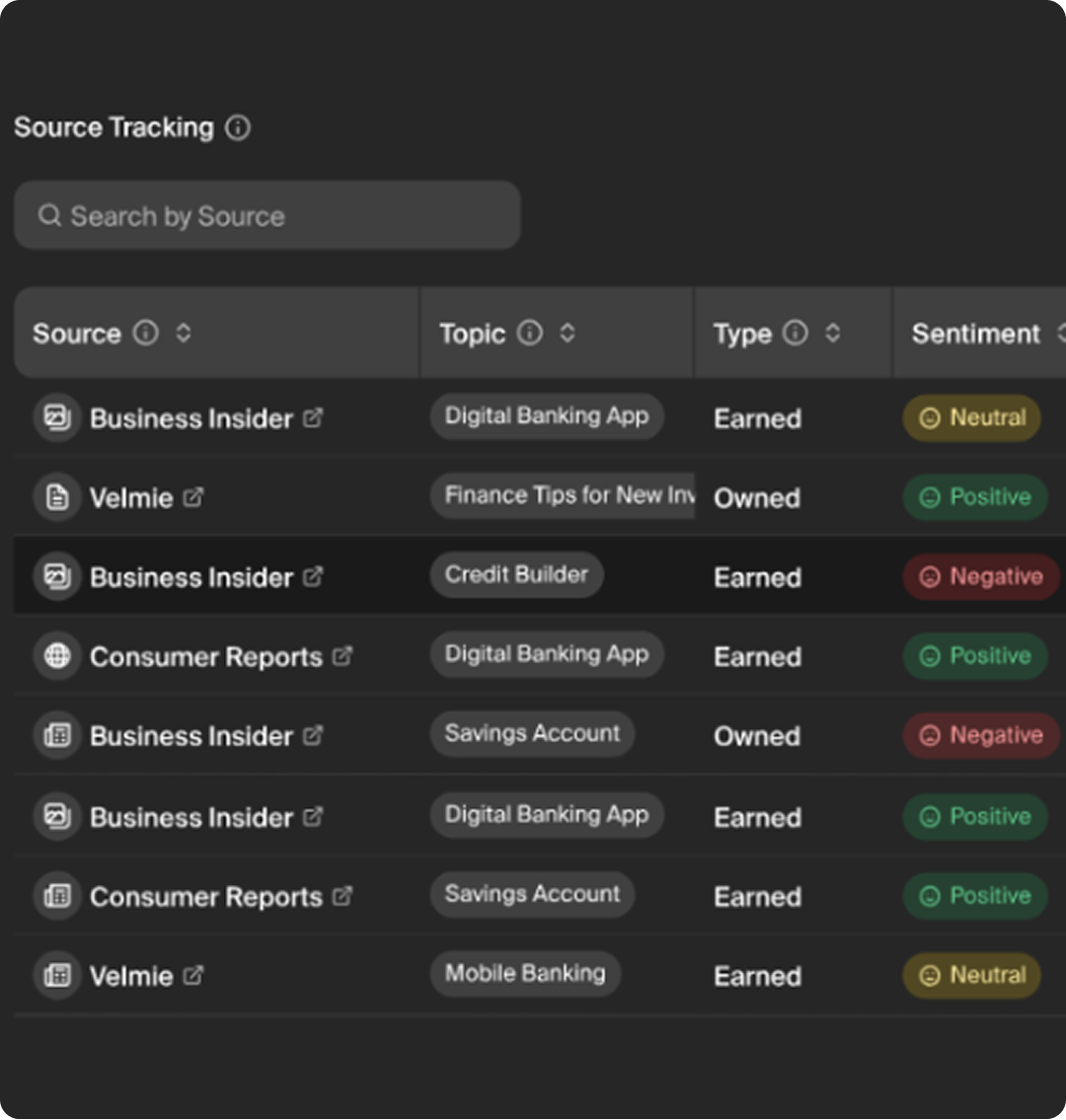
Visual communication capabilities and generative AI create compelling images and infographics, expanding creative storytelling possibilities. Social media analytics provide real-time insights with specific, actionable recommendations for campaign optimization.
Predictive analytics tools support strategic PR planning and competitive intelligence, providing the strategic information necessary for informed decision-making. PR Lab's extensive research documents 21 distinct ways AI is transforming PR operations, from automated press release creation and media outreach to sophisticated campaign analysis and competitive monitoring.
Organizations integrating AI into PR strategies are achieving overwhelming competitive advantages compared to traditional approaches.
Efficiency improvements enable PR teams to manage larger campaigns, serve more clients simultaneously, and address complex challenges without proportional resource increases. This scalability advantage has become critical as organizations face pressure to demonstrate measurable results while managing expanding digital presence requirements.
Quality improvements through AI content creation, sentiment analysis, and strategic optimization are raising industry effectiveness standards. Organizations failing to adopt these capabilities risk falling behind competitors leveraging AI to deliver superior results consistently.
Strategic intelligence provided by AI monitoring and analysis enables more informed decision-making with faster response times to market changes. This agility advantage proves valuable in evolving industries where timing often determines campaign success or failure.
The transformation of public relations through artificial intelligence represents the most significant professional evolution since the internet changed media relations. This isn't incremental improvement; it's industry redefinition.
The evidence demonstrates that AI enhances rather than replaces PR professionals. Meltwater's data confirms that human creativity remains essential while AI handles technical execution that consumes valuable professional time.
The teams and agencies integrating these capabilities while preserving human creativity and strategic thinking are establishing competitive advantages that will define industry leadership for the next decade.
For PR professionals, the question isn't whether to embrace AI tools. It's how you can integrate them while strengthening the human elements that make exceptional PR powerful. The organizations making this transition now are building the foundations for sustained competitive dominance in a sophisticated marketplace.


